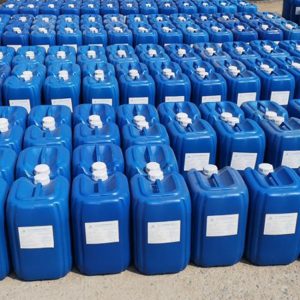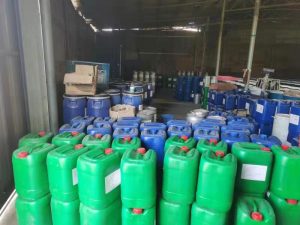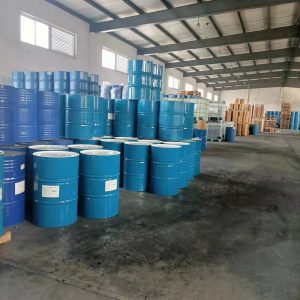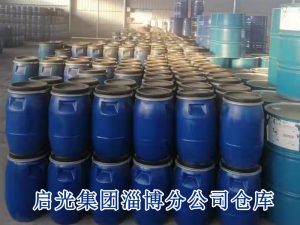Auxiliaries-Foaming agent types
I. Physical blowing agent
There are more types of physical blowing agents, such as aliphatic hydrocarbons, chlorinated hydrocarbons, hydrochlorofluorocarbons and carbon dioxide gas, etc. Since the 1950s, CFC-11 has been widely used as the preferred blowing agent for polyurethane, which has a destructive effect on the ozone layer of the atmosphere, and in order to protect the earth’s ecological environment, it is necessary to prohibit the use of CFCS-type compounds. Over the years, domestic and foreign countries have been looking for and developing ideal alternative products. In addition to considering the nature of the blowing agent itself, the alternative blowing agent generally requires appropriate adjustment and improvement of raw materials such as polyether polyols, leveling agents, catalysts and other raw materials to optimize the formulation system, so the key to the physical blowing agent lies in the development of alternative products and application research. So far, the foaming agent CFC ~ 11 replacement of the following four main programs.

(1) carbon dioxide blowing agent
There are two types of carbon dioxide blowing agent, one is isocyanate and water reaction to generate carbon dioxide (water foaming) as a blowing agent, the other is liquid carbon dioxide. Water foaming and CFC-11 compared to the advantages of carbon dioxide ODP (ozone depletion value) is zero, non-toxic, safe, there is no recycling problems, do not need to invest in the transformation of foaming equipment; disadvantages are higher viscosity of the polyol component in the foaming process, the foaming pressure and foam temperature are higher, the foam and the substrate bonding deteriorated, especially the thermal conductivity of the hard foam products; due to the carbon dioxide from the bubble hole Diffusion of carbon dioxide from the pores of the bubble faster, while the air into the pores slower, thus affecting the dimensional stability of the foam, although it can be improved by modification, but still not as good as CFC-11 foaming materials.
At present, it is mainly used in the fields of heating pipe insulation, packaging foam and agricultural foam, etc., which do not require high thermal insulation; liquid carbon dioxide foam has the same advantages and disadvantages as water foam, and is mainly used in polyurethane soft foam, and can be used in hard foam to overcome the shortcomings of water foam such as increasing the consumption of isocyanate, brittleness of foam, and poor adhesion with substrate, etc. However, liquid foam should be used for the foaming, and it is necessary to make the foaming of the foam to be more efficient. However, liquid foaming to improve the foaming machine, liquid carbon dioxide storage and transportation costs increase, liquid carbon dioxide foaming technology is still under continuous research and development.

(2) Hydrogenated hydrochlorofluorocarbon blowing agent
Hydrogenated hydrochlorofluorocarbon (HCFC) type blowing agent, molecules containing hydrogen, chemical properties are unstable, easy to decompose, so its ODP is much smaller than CFC-11, so HCFC is used as a first-generation alternative to CFC blowing agent, temporarily used during the transition period should be replaced by non-chlorine compounds as much as possible in a short period of time.
At present, the European Union, the United States, Japan banned the use of HCFC-based blowing agent for the end of 2004, China’s deadline for the use of the year 2030. At present, commercially available CFC-11 can be replaced by HCFC-14LB, which has good compatibility with polyol and isocyanate, and can be used directly to replace CFC-11 with HCFC-14LB under the condition of not increasing equipment, and the dosage of HCFC-14LB is less than that of CFC-11 in achieving the same density and similar physical characteristics of the foam body.The defects of HCFC-141B lie in the higher price of raw materials. The disadvantages of HCFC-141B are the higher price of the raw material, its solubility in some ABS and high-impact polystyrene, and its higher thermal conductivity than CFC-11, which requires a higher density of the foam body to achieve the thermal insulation effect.
Another class of hydrochlorofluorocarbon products replacing CFC-11 is the 60:40 mixture of HCFC-22/HCFC-14LB, which is a commonly used solvent in industrial production, with mature production technology and moderate price, with the disadvantage that the solubility of the HCFC-22/HCFC-141B system in general polyols is relatively low, and the processing of HCFC-22-containing The disadvantage is that the solubility of HCFC-22/HCFC-141B system in general polyol is relatively low, and processing of polyol containing HCFC-22 is relatively difficult. In addition, the ODP value of HCFC-124 is only 1/5 of that of HCFC-141B, allowing a longer service life, and some foreign enterprises plan to use it in building and refrigerator appliance foams to compete with the higher-cost hydrofluoroalkanes (HFC).

(3) Hydrocarbon blowing agent
Hydrocarbon compounds used as polyurethane blowing agents are mainly cyclopentane, especially cyclopentane’s rigid foam system has the advantages of low thermal conductivity and anti-aging properties, ODP value of zero, etc. It is often used in the fields of refrigerators, cold storage and thermal insulation of buildings, and it has become the first choice of CFC-11 substitute for rigid foam in China.

In addition to n-butane, isobutane as an auxiliary blowing agent, the preparation of cyclopentane polyurethane rigid foam must solve the following two problems, the selection of explosion-proof equipment to solve the problem of cyclopentane flammable, explosive; the use of certain measures such as n-pentane, isopentane and cyclopentane together, can improve the foam mobility, thereby solving the problem of poor solubility of cyclopentane in polyether polyol.
In recent years, the production and development of cyclopentane in China has made great progress, and high purity cyclopentane can be obtained through depolymerization, hydrogenation and other processes with ethylene cracking by-product C5 as raw material. Beijing Research Institute of Chemical Industry undertook the “cyclopentane product development” project through the appraisal, at present the domestic Longshan Chemical Factory in Jilin, Beijing Oriental Chemical Factory, Nanjing Hongbao Li Company Limited and so on has been successfully constructed cyclopentane production equipment, and with a number of famous domestic refrigerator manufacturers, to provide cyclopentane-type combination of polyether used as foaming materials. materials.
(4) Hydrofluoroalkane (HFC) blowing agent
HFC compounds ODP value is zero, in the production of flexible PU foam is the ideal replacement of CFC-11, the early HFC blowing agent is mainly HFC-134A and HFC-152A, these two blowing agents have low molecular weight and low boiling point, to achieve the same density and similar physical properties of the foam body, the dosage is less than the dosage of CFC-11, and the performance is more stable, but they are defective in thermal conductivity is relatively low, but they are not suitable for use as foaming materials. Their defects are high thermal conductivity and low solubility in general polyol, processing of combined polyether containing HFC-134A and HFC-152A is relatively difficult, and foaming equipment is needed to meet the processing requirements.
Due to the shortcomings of these two products, people have accelerated the research and development of new HFC-based blowing agents. The current research and development shows that HFC-245FA and FC-365MFC two varieties are very potential. These two products and CFC-11 have similar characteristics, thermal conductivity and HCFC-141B in the same range, its ODP value is zero, very low toxicity, good dimensional stability, HFC-245FA excellent electrical insulation properties, the disadvantage is that the boiling point is low; HFC-365MFC boiling point is high, but with flammability.
At present, the industry at home and abroad agreed that the above two products are ideal CFC-11 replacement products, received special attention, the pace of research and production is rapid, foreign countries have entered the stage of industrialized production, such as in October 2003, Japan’s central glass company’s chemical subsidiaries to build an annual output of 5,000T of HFC-245FA device, the end of 2002, Solvay company in France to build an annual output of 15,000 tons of HFC-245FA device, the end of the year. 15,000 tons of HFC-365MFC device. It predicts that the high-performance blowing agent with high insulating property and not destroying the ozone layer will be popularized and used in the world.
(5) Other
In recent years, many foreign research institutions to speed up the research work of CFCS blowing agent alternatives, such as Japan’s Industrial Technology Research Institute for the Earth’s environment, the introduction of specific new alternative compounds hydrogenated polyether (HFE), and developed seven series of HFE products, the product does not destroy the ozone layer, in the case of water as a solvent, alcohol and fluorinated olefin reaction, the effect is very good.
In addition, with the development of CFCS replacement technology, the surfactant product structure of polyurethane foam has also changed greatly. Due to the flexible polyurethane foaming process, liquid carbon dioxide will be converted into gas almost instantly, so the surfactant is required to have a strong nucleation ability, otherwise it is difficult to get the excellent nucleation ability of the bubble structure, such as Germany Goldschmidt and the United States of America Witco company’s surfactant products are suitable for liquid carbon dioxide foaming system of flexible polyurethane foam products and so on.
China’s CFCS replacement research progress faster, the current mass production of HCFC-141B, HCFC-22, and drawing on foreign experience in the development of hydrogenated hydrofluoroalkane blowing agent HFC-134A and HFC-152A, the high-performance HF-245FA and HFC-365MFC is also carried out research and development work; cyclopentane production capacity of 10,000 tons per annum, the production of The annual production capacity of cyclopentane has reached 10,000 tons, and the production technology is at the international advanced level.

